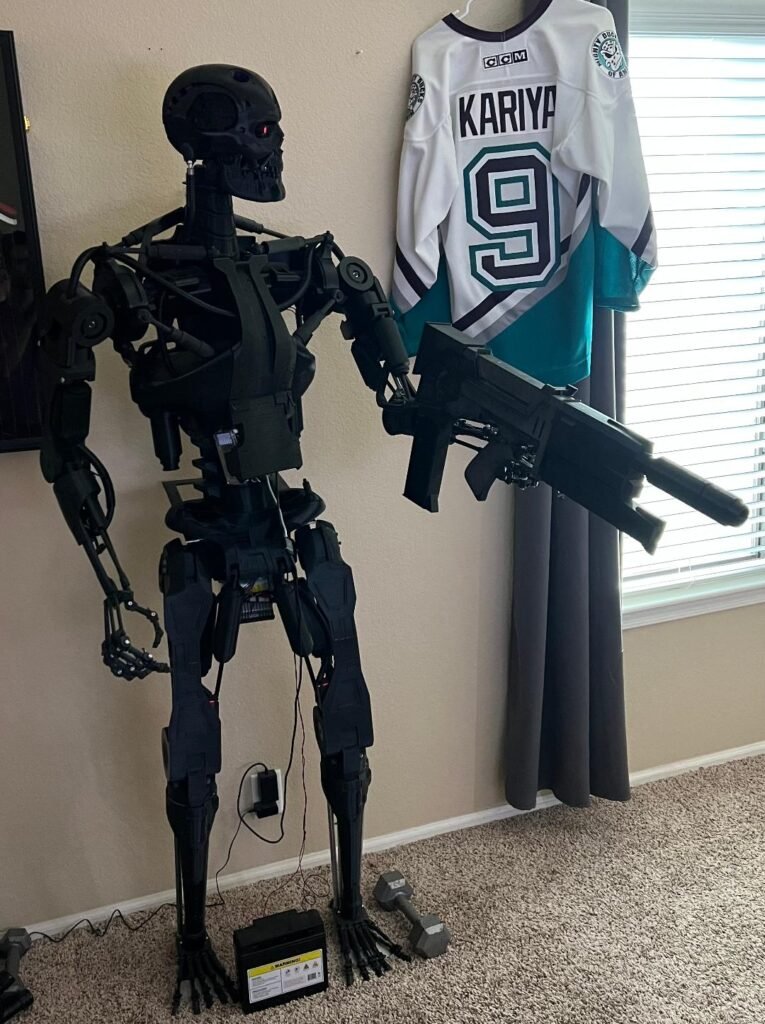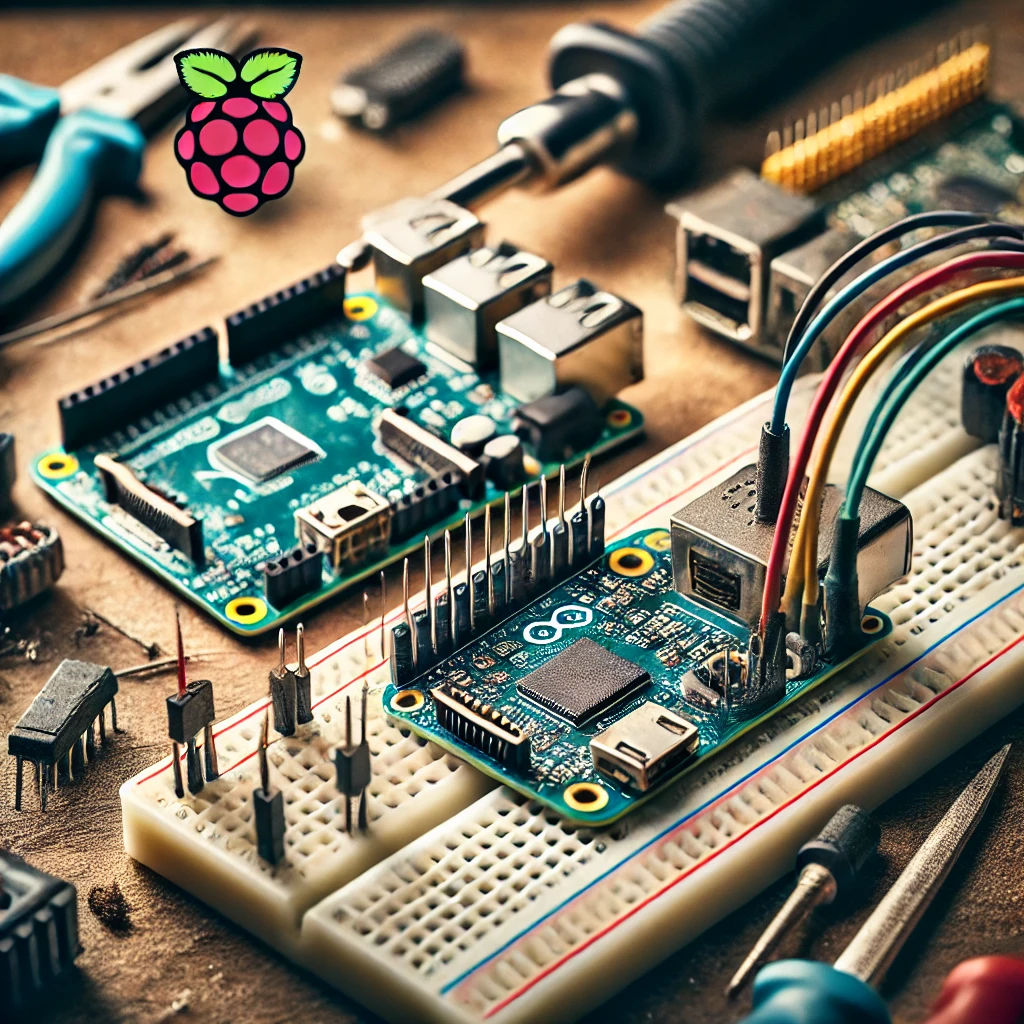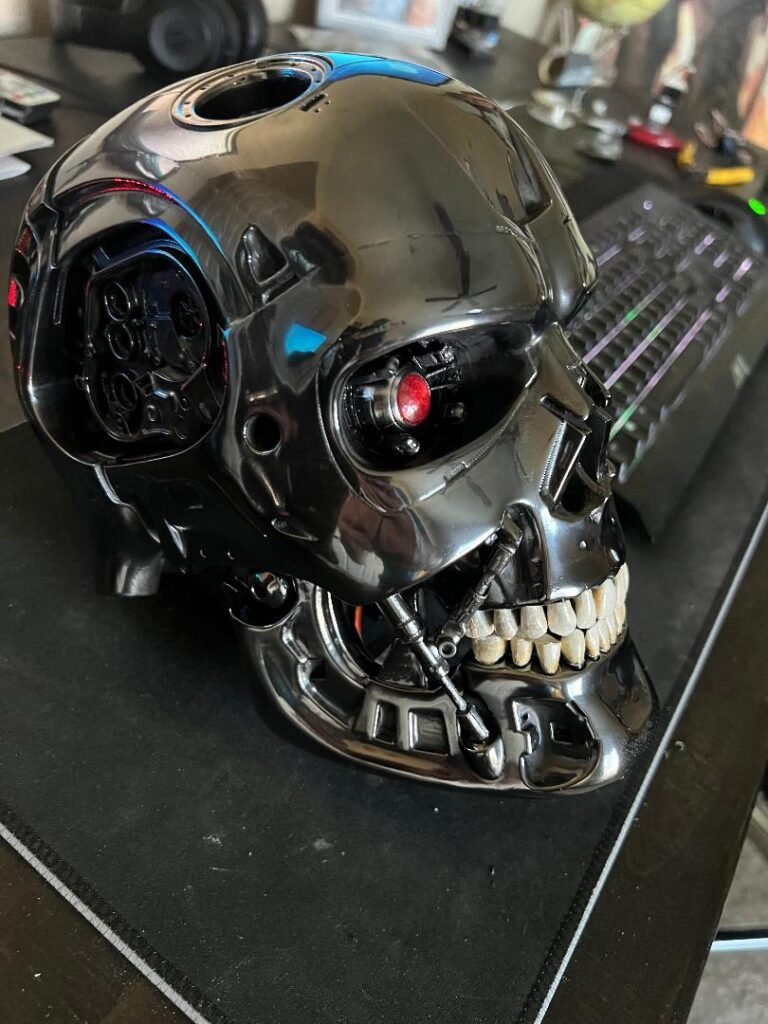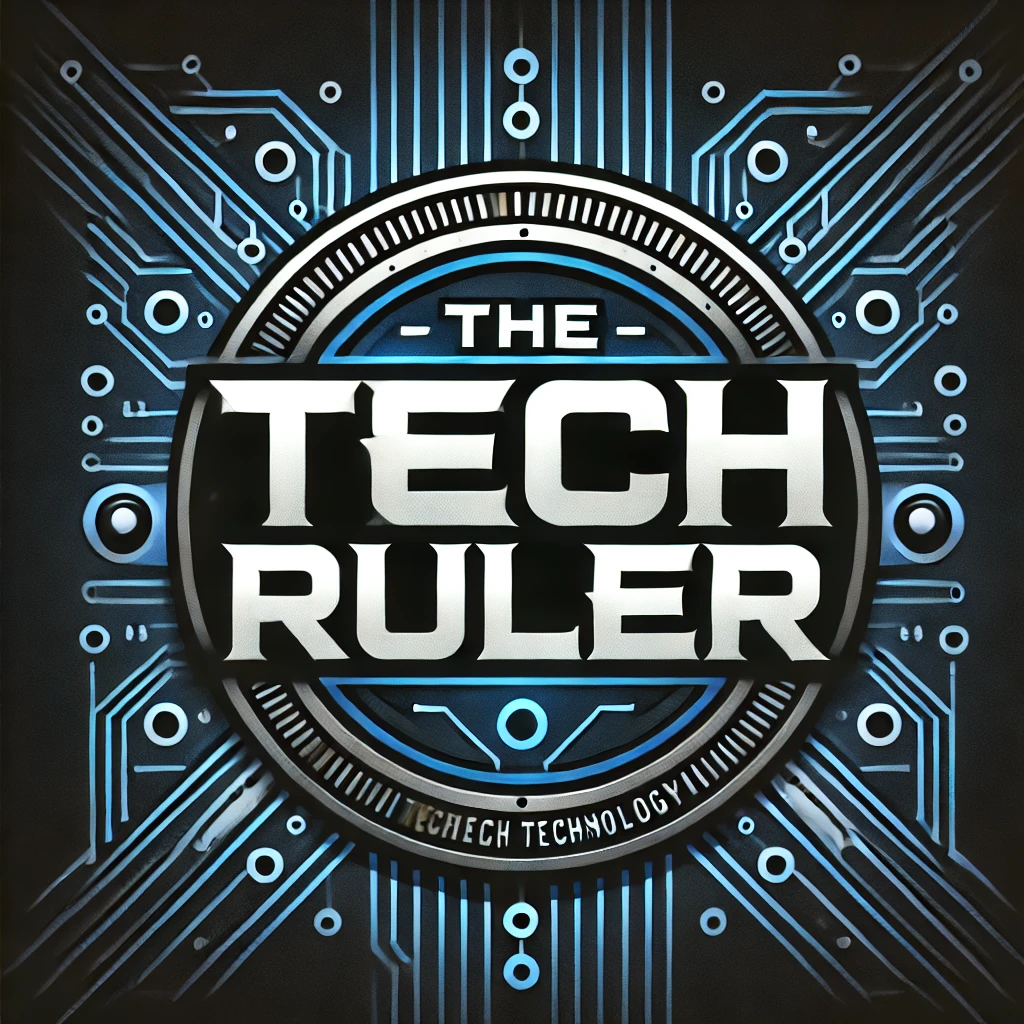
Introduction
Imagine building a full-size T-800 Terminator that is fully articulated from scratch – all with the help of 3D printing, an Arduino, a Raspberry Pi, and over 20 servos to bring it to life. In this article, we dive into the incredible story of one robotics enthusiast who dedicated over six months to creating a full-scale replica of the iconic T-800. This project is a testament to what’s possible with modern technology and a lot of determination, from modifying parts to house servos to using unique painting techniques for that perfect chrome finish.
The Build: 3D Printing Over 6 Months
The project began with a vision: to recreate the T-800 Terminator as a fully functional robotic model. The creator, spent countless hours designing, printing, and assembling over a hundred individual pieces. The sheer size of this project meant that each part had to be carefully planned, modified, and perfected.
Using a high-quality 3D printer, he printed components that would form the skeleton, joints, head, and limbs of the T-800. Due to the complexity of the build, it took him more than six months to finish all the printing. He also had to design custom modifications for certain parts to fit servos, adding to the project’s intricacy.

Powering the Terminator: Arduino and Raspberry Pi
To bring the Terminator to life, he used a combination of an Arduino and a Raspberry Pi. The Arduino controls over 20 servos, each one meticulously positioned to allow movement in every joint. This makes the T-800’s arms, legs, neck, and even individual fingers move in a highly realistic manner.
The Raspberry Pi handles the higher-level processing tasks, such as coordinating complex sequences and managing interactive features. Together, these components bring the T-800 model to life with precise movements and fluid articulation.
Modifying Parts for Realistic Movement
To achieve a fully articulated robot, the creator had to modify many of the 3D printed parts. By making adjustments to the original designs, he could fit servos into the Terminator’s joints, allowing for realistic rotation and flexibility.
These modifications required a deep understanding of both mechanics and electronics. He used special servo brackets and mounts to secure the servos in place and allow each joint to move like a human limb. Whether it was the head turning, fingers bending, or arms raising, the T-800 could mimic human-like movements thanks to these customized parts.

Chrome Finish: Using Graphite Powder for That Terminator Look
After the assembly was complete, the creator began the process of giving the T-800 its chrome finish. Currently, he’s applying graphite powder to the model, a unique technique that achieves a reflective, metallic sheen, enhancing the T-800’s appearance. The graphite powder is brushed and buffed onto the surface, gradually creating a durable and striking chrome look that mimics the movie version.
This chroming process is still underway, but even in its unfinished state, the T-800 is starting to look like it stepped off the set of Terminator.
What’s Next for the T-800 Project?
With the chrome finish still in progress, there’s more to look forward to as the creator continues to perfect the T-800’s look. He plans to add more features to the Raspberry Pi, enabling interactive elements to make the model even more realistic. The journey so far has been one of patience, precision, and creativity. Stay tuned for updates on this life-sized robotic build that’s set to become a masterpiece of DIY robotics.
Conclusion
This T-800 project showcases what’s possible with 3D printing, servos, Arduino, and Raspberry Pi. It’s a challenging and ambitious build that proves how dedication and creativity can bring an iconic character to life. As the chroming process nears completion, this T-800 model is on its way to becoming a true work of art, shining with a metallic sheen and moving with remarkable realism.


